Multimeters
Filters
Filters

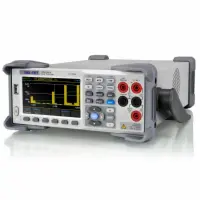
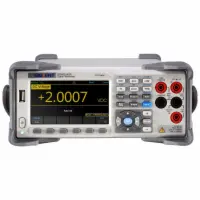
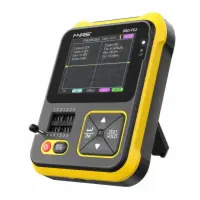
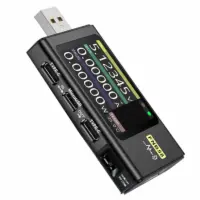

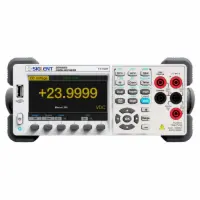
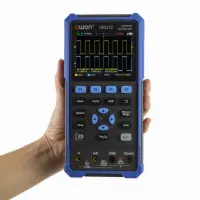
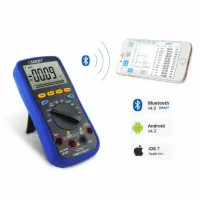
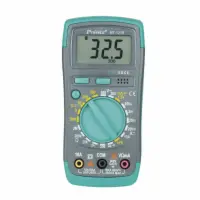

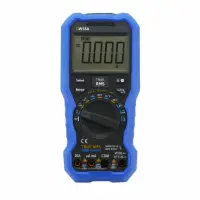
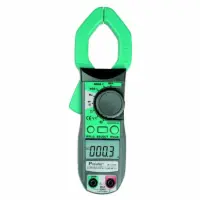
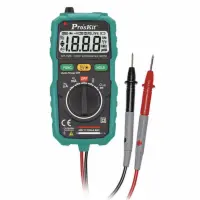
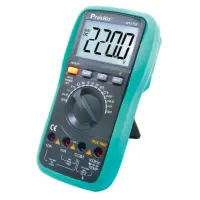

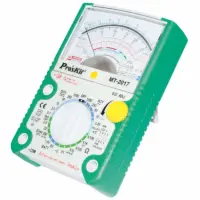
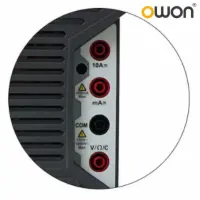

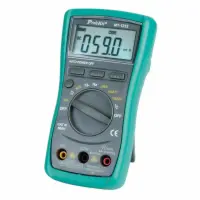
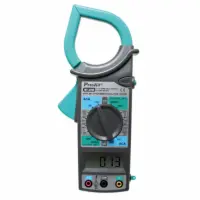
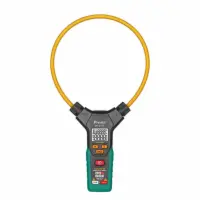
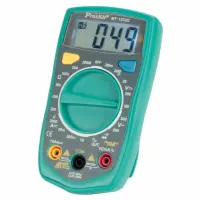
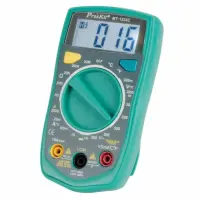
Circuit Specialists has a variety of handheld digital multimeters (DMMs) tailored to your needs and budget. We carry everything from affordable multimeters for do-it-yourselfers to professional-level, true-RMS and digital multimeters with auto range feature for more demanding applications.
Our benchtop multimeters are astoundingly accurate and responsive, and they feature a wealth of measurement functions you won't find on similarly priced DMMs. We also carry digital storage oscilloscopes with multimeter functions.
What is a Multimeter?
A multimeter is a type of test equipment that measures two or more electrical values, usually voltage (volts), current (amps), and resistance (ohms). It’s called a “multi” meter because it combines these 3 popular meters (voltmeter, ohmmeter, and ammeter) in one device and may offer additional measurements, like the following:
- Capacitance
- Conductance
- Decibals
- Duty Cycle
- Frequency
- Inductance
- Temperature
- Continuity
- Diodes
- Transistors
- Battery Test
A typical multimeter will include a display for the measurements, input jacks for test leads or probes, a dial or rotary switch to select what you intend to measure, and various buttons to adjust other settings or perform additional tests, depending on the model.
Multimeters might also be called a multitester or DMM (which stands for Digital Multi-Meter).
What is a Multimeter Used For?
At the most basic level, multimeters measure voltage, current, and resistance. These measurements are useful for a variety of applications, which is why everyone from homeowners to electricians to electronics hobbyists and car mechanics use multimeters to perform electrical tests.
A homeowner might use a multimeter to see which batteries or lightbulbs still work or test wall outlets, while an electronics hobbyist (“maker”) might use it to test the continuity in a circuit or measure voltage output of faulty electronics they’re repairing. People who enjoy tinkering with their cars might use a multimeter to check the car battery or alternator.
And of course, electricians and other technical professionals are using multimeters constantly to assess faulty equipment and electrical installations.
Analog vs. Digital Multimeter
The main difference between analog and digital multimeters is the display. Digital multimeters usually display readings on a built-in digital LCD screen. Analog multimeters provide measurement readings via a needle and scale. Digital meters are slowly taking over the multimeter market due to their ability to provide a high level of accuracy.
Analog multimeters don’t typically require batteries or external power and tend to be cheaper than digital multimeters. However, digital multimeters are often more accurate and more durable than analog versions.
Fun Fact: Did you know that there are Bluetooth Multimeters? Check out the OWON OW18B Smart Digital Multimeter with Bluetooth
Bench Multimeter vs Handheld Multimeter
Your typical general-use multimeter is likely going to be compact and portable. These handheld multimeters can still be incredibly accurate and powerful. However, if you’re looking for a versatile, powerful multimeter with top-notch precision and accuracy, then a bench multimeter might be the way to go.
Bench multimeters tend to be more expensive than handheld multimeters. They’re also far less portable and named “bench” because benchtop multimeters are designed to remain in your workstation instead of being moved around.
If you don’t plan on taking your multimeter out in the field (i.e, you don’t plan on moving your multimeter to different locations), and you’re looking for a multimeter with more precision and data logging capabilities, then the cost of a benchtop multimeter is well worth the investment.
Siglent, in particular, offers a line of incredibly powerful multi-functional benchtop multimeters.
Oscilloscope vs. Multimeter
Oscilloscopes primarily measure voltage waves, which are displayed in graphical form. While multimeters provide a variety of measurements and only provide exact, discrete values, oscilloscopes depict the information in waveforms. In other words, oscilloscopes show voltage readings in “pictures” and multimeters provide readings in “numbers.” Additionally, oscilloscopes don’t often offer the same number of measurements (like current, resistance, etc.) as multimeters.
However, you can purchase oscilloscope multimeters that combine both in one! For example, the Hantek 2D72 is a popular handheld oscilloscope multimeter.
Multimeter FAQ
Which brand of multimeter is the best?
With any electrical test equipment, the brand or manufacturer can be a key indicator of quality. Fluke, Hantek, Siglent, Pro’s Kit (Eclipse Tools), Circuit Specialists, and Owon have long been trusted brands in the electronics industry, among others.
Some, like Fluke and Hantek, specialize in electronic test equipment. Siglent and Fluke’s equipment is often geared more toward electricians or professionals, whereas Hantek, Pro’s Kit, and Owon offer more low-cost general-purpose multimeters and test equipment that are well-suited for prototyping electronics or using around the house.
Circuit Specialists offers quality, low-cost multimeters, as well as high-end sophisticated power supplies and other electronic equipment that professionals, students, electronics hobbyists, and dedicated DIYers can appreciate.
How much should I spend on a multimeter?
A good general-purpose multimeter will typically range from $20 to $70. Be wary of any multimeters that cost below $20; although they might look the same as more expensive meters, it’s likely because the manufacturer is skimping on safety, accuracy, and durability.
If you’re an electronics hobbyist who wants a multimeter that can accurately measure and identify the smallest changes in voltage, amps, resistance, and other outputs, then you’re likely going to spend $50+ on a decent multimeter (and at this price point, it might be worth investing in an oscilloscope multimeter like the Hantek 2D72 or Owon HDS272).
An electrician can spend anywhere from $60 to $400 on a multimeter that has the safety features, voltage range, and CAT rating needed to securely and accurately perform tests.
Likewise, a professional researcher or electronics enthusiast might invest in advanced multimeters over $200, including benchtop multimeter oscilloscopes to perform more precise tests and experimentation.
Is it OK to buy a cheap multimeter?
You can find cheap multimeters as low as $5, and you might get away with a decent multimeter between $10 and $15. But as much as some might say, “Multimeters are basically the same, just get the cheapest!” the truth is you do get what you pay for—and getting a cheap multimeter is more than just a poor investment: it’s potentially life-threatening.
You can still get a safe, effective multimeter at a low price—you just have to know what to look for. Stick to quality brands, and pay attention to the safety features.
Don’t get too swept away by bonus features like transistor testing or Bluetooth functionality. Instead, make sure the ranges fall within what you want to measure and that you’re at least 0.5% or lower on accuracy on the smallest values you’re measuring (like millivolts or mV).
On the other hand, if you're simply looking for a device that reads out voltage and amps as a way to monitor the power consumption of home electronics, you might benefit from a budget-friendly alternative to the multimeter like the Kill A Watt meter. This wattage meter readily plugs into your wall outlets and reads out the wattage consumption of any appliances plugged into the meter.
What multimeters do electricians use?
Electricians are often hooking up to powerful electrical equipment, which usually requires a multimeter that can at least measure 600 volts and is rated at CAT III or CAT IV (anything less can be incredibly unsafe if you’re hooking up to power mains).
Additionally, electricians often use portable, rugged multimeter builds with durable rubber cases and shock resistance. For the best accuracy, electricians typically look for TRMS multimeters with low impedance (Low-Z). They might use a no-contact clamp-on multimeter for some of their measurements.
How do I choose a multimeter for my home?
If you’re unfamiliar with multimeters, it can be overwhelming sorting through all the specs and features— especially if you’re looking for a standard, general-purpose multimeter for home use.
A simple approach for the average homeowner is to start with the CAT rating: a CAT III or CAT IV multimeter is going to be safe and accurate enough to handle the high voltages you’re measuring. Opt for multimeters with auto-ranging (that way you don’t need to adjust the knob each time) and with a battery life that’s 300+ hours for convenience.
What should you avoid with a multimeter?
While there’s no set list of do’s and don’ts when it comes to selecting a multimeter, we’ve found that the following tips can help steer you away from problematic multimeters:
- Avoid multimeters that combine voltage and amp readings in the same test lead input (it’s much easier to short-circuit or blow a fuse).
- Avoid analog multimeters—unless you’re already familiar with how to use and read multimeters or you’re getting an analog meter for educational purposes.
- Avoid multimeters that have glass fuses IF the multimeter is designed to measure high voltages of 600V and beyond (you’ll want a multimeter with much safer ceramic or HRC fuses for these).
- Avoid multimeters with 100 hours or less battery power—it’s a pain to disassemble one just to change its battery.
- Avoid (or at least be very skeptical of) multimeters that are under $20, especially if it’s from a lesser-known manufacturer.
- Avoid CAT I or CAT II multimeters UNLESS you’re only planning to measure small electrical outputs and electronic components.
How can you tell if a multimeter is accurate?
Often, the best way to test the accuracy of a multimeter is by cross-checking it with another multimeter or oscilloscope. You can also perform multiple tests on the same item and see if the readings fall within the ± range specified in the manual.
For example, if your multimeter says it has a ±(0.5%+2dig) accuracy for millivolt, and consecutive readings were more than 4 digits off, chances are your multimeter might be inaccurate.
